Đề Thi Thử Tốt Nghiệp THPT Năm 2024 (29.05.2024) Đề 19
Thầy Thắng
ĐỀ THI THPT
15
Ngày đăng: 29-05-2024 08:50:57
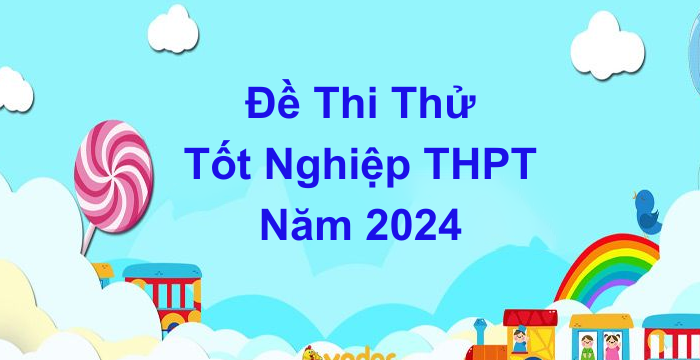
ĐỀ 19 ĐỀ THAM KHẢO PHÁT TRIỂN MINH HỌA BGD 2024
KỲ THI TỐT NGHIỆP TRUNG HỌC PHỔ THÔNG NĂM 2024
Bài thi: NGOẠI NGỮ; Môn thi: TIẾNG ANH
Thời gian làm bài: 60 phút không kể thời gian phát đề
Mark the letter A, B, C, or D on your answer sheet to indicate the word whose underlined part differs from the other three in pronunciation in each of the following questions.
Question 1: A. shame B. drank C. cable D. blaze
Question 2: A. ancient B. vertical C. compose D. eradicate
Mark the letter A , B , C , or D on your answer sheet to indicate the word that differs from the other three in the position of primary stress in each of the following questions.
Question 3. A. defend B. proceed C. decent D. expand
Question 4. A. initiate B. epidemic C. opponent D. enthusiast
Mark the letter A, B, C, or D on your answer sheet to indicate the correct answer to each of the following questions.
Question 5: The woman _______ at the bus stop was in a hurry so she hailed a taxi.
A. standing B. to standing C. stand D. is being stood
Question 6: Vietnam suffered from ________ incidence of cyberattacks in Southeast Asia last year.
A. the three highest B. third the highest C. the third highest D. the highest third
Question 7: He_________ into the house to steal things, he was bitten by a dog.
A. broke B. breaking C. was breaking D. has broken
Question 8: He is fond ______ jazz music.
A. off B. with C. by D. of
Question 9: To preserve our traditional music “cai luong”, we need to expand it among younger generations, ______?
A. don’t we B. do we C. need we D. needn’t we
Question 10: There is a lot that can be ________ in a handshake, a kiss, or a hug.
A. conveyed B. transferred C. transmitted D. concealed
Question 11: Vietnam lost 2-3 to Indonesia in ______ SEA Games 32 semifinals despite having more men in the second half.
A. no article B. an C. a D. the
Question 12: Countries can’t develop if half the population are ____________ from fulfilling their full potential.
A. put back B. held back C. turned down D. brought down
Question 13: Smokers generally do know that smoking is extremely harmful, but it’s just that they can’t help _____________ it.
A. doing B. to do C. do D. having done
Question 14: The book describes the ______ of events that led up to the assassination.
A. bus B. coach C. subway D. train
Question 15: The earth_____ by dinosaurs over sixty-five million years ago.
A. was occupied B. occupied
C. has occupied D. was being occupied
Question 16: Tens of thousands of people from around the world continued to queue across London on Sunday to _____ their respects to Queen Elizabeth II.
A. pay B. make C. give D. bring
Question 17: The Indian python (Python molurus) ___________ as endangered in Vietnam last year.
A. have been restricted B. was classified C. is locating D. are located
Question 18: With no _______, Mai Nha Island in Phu Yen Province provides a simple kind of “deserted island” experience where you can escape the crowds, relax and enjoy nature.
A. electricity B. electrics C. electrical D. electronic
Question 19: __________ drought has drained Tri An reservoir in the southern Dong Nai Province, leaving its bed dry and cracked for the first time in 12 years.
A. Prolonged B. Expanded C. Widened D. Strengthened
Mark the letter A, B, C, or D on your answer sheet to indicate the sentence that best completes each of the following exchanges.
Question 20. Hoa is talking to Mai, her best friend, in the classroom.
Hoa: “Shall we go boating tomorrow?” - Mai: “______. The weather report says a storm is coming”.
A. I’m afraid we can’t B. Sure
C. That’s a good idea D. That’s a deal
Question 21. Sarah and Kathy are talking about bad habits of children.
Sarah: “Children under ten shouldn’t stay up late to play computer games.” - Kathy: “ .”
A. I don’t quite agree with you B. Yes, I share your opinion.
C. You are absolute right. D. Surely, they shouldn’
Mark the letter A, B, C, or D on your answer sheet to indicate the sentence that is closest in meaning to each of the following questions.
Question 22. The last time I saw her was three years ago.
A. I have not seen her for three years.
B. About three years ago, I used to meet her.
C. I have often seen her for the last three years.
D. I saw her three years ago and will never meet her
Question 23. Our teacher asked us, ‘What are you most worried about?”
A. Our teacher asked us what I was most worried about
B. Our teacher asked us what were we most worried about
C. Our teacher asked us what we are most worried about
D. Our teacher asked us what we were most worried about
Question 24. I’m sure that they had practiced hard for the games as they won a lot of medals.
A. They couldn’t have practiced hard for the games as they won a lot of medals.
B. They must have practiced hard for the games as they won a lot of medals.
C. They shouldn’t have practiced hard for the games as they won a lot of medals.
D. They might have practiced hard for the games as they won a lot of medals.
Mark the letter A, B, C or D on your answer sheet to indicate the sentence that best combines each pair of sentences in the following questions.
Question 25: He stepped on the mine, and it exploded.
A. If he doesn’t step on the mine, it doesn’t explode.
B. If he doesn’t step on the mine, it won’t explode.
C. If he didn’t step on the mine, it wouldn’t explode.
D. If he hadn’t stepped on the mine, it wouldn’t have exploded.
Question 26: Smoking is unhealthy. It also costs governments billions of dollars in health-care costs.
A. Not only is smoking unhealthy but it also costs government billions of dollars in health-care costs.
B. Whereas smoking is unhealthy, it costs government billions of dollars in health-care costs.
C. If smoking is unhealthy, it will cost government billions of dollars in health-care costs.
D. Smoking is so unhealthy that it costs government billions of dollars in health-care costs.
Mark the letter A, B, C, or D on your answer sheet to indicate the word(s) CLOSEST in meaning to the underlined word(s) in each of the following questions.
Question 27: It was really difficult to decide between the two candidates.
A. steal B. think C. attempt D. choose
Question 28: Students are expected to always adhere to school regulations.
A. question B. violate C. disregard D. follow
Mark the letter A, B, C, or D on your answer sheet to indicate the word(s)OPPOSITE in meaning to the underlined word(s)in each of the following questions.
Question 29: Our well- trained staff are always courteous to customers.
A. helpful B. friendly C. rude D. polite
Question 30: The nominating committee always meets behind closed doors, lest its deliberations become known prematurely.
A. privately B. safely C. publicly D. dangerously
Mark the letter A, B, C, or D on your answer sheet to indicate the underlined part that needs correction in each of the following questions.
Question 31: The equator is an imaginative line around the middle of the earth.
A. equator B. imaginative C. around D. the
Question 32: Jenny gives a great performance at the festival yesterday, we now know she has artistic talent.
A. gives B. at C. know D. has
Question 33: Since poaching is becoming more serious, the government has imposed stricter laws to prevent them.
A. poaching B. serious C. stricter laws D. them
Read the following passage and mark the letter A, B, C, or D on your answer sheet to indicate the correct answer to each of the questions.
A pandemic is the global outbreak of a disease. There are many examples of pandemics in history, the most recent being COVID-19, as declared by the World Health Organization on March 12, 2020.
Generally, pandemics are first classified as epidemics – the rapid spread of a disease across a particular region or regions. The Zika virus outbreak that began in Brazil in 2014 and made its way across the Caribbean and Latin America was an epidemic, as was the Ebola outbreak in West Africa in 2014-2016. The U.S. has been experiencing an opioid epidemic since 2017 because of the widespread misuse and high numbers of deaths caused by the drug. COVID-19 started as an epidemic in China before becoming a pandemic, after its rampant spread around the world in a matter of months.
However, it must be noted that epidemics don’t always become pandemics, and it’s not always a fast or clear transition. For example, HIV was considered an epidemic in West Africa for decades before becoming a pandemic in the late 20th century. Now, thanks to advances in modern medicine, it is considered endemic, which means the rate of the disease is stable and predictable among certain populations, according to the American Medical Association.
(Adapted from livescience.com)
Question 34: What is the best title for this passage?
A. Why Is COVID-19 A Pandemic? B. What Is A Pandemic?
C. How Epidemics Become Pandemics D. The Most Deadly Pandemics
Question 35: The word “rampant” in paragraph 2 is closest in meaning to ___________.
A. brutal B. intensive C. rapid D. prominent
Question 36: Based on paragraph 2, why was the Zika virus outbreak considered an epidemic?
A. It spread widely and became a pandemic in the end.
B. It spread from the Caribbean to Latin America.
C. It spread quickly from Brazil to other regions.
D. It spread in West African regions just like Ebola did.
Question 37: The word “it” in paragraph 3 refers to __________.
A. HIV B. epidemic C. West Africa D. medicine
Question 38: Which of the following is NOT TRUE about pandemics, according to the passage?
A. Pandemics are diseases that spread globally.
B. There have been many pandemics in history.
C. Pandemics are usually classified as epidemics at first.
D. Most epidemics will quickly develop into pandemics.
Read the following passage and mark the letter A, B, C, or D on your answer sheet to indicate the correct answer to each of the questions.
Around the world, an estimated 92 million tonnes of everyday clothing is thrown away each year. In the US alone, about 85% of all discarded textiles – roughly 13 million tonnes in 2017 – are either dumped into landfill or burned. By 2030, it is expected that we would discard more than 134 million tonnes of textiles annually.
There are many good reasons to seek out alternatives to chucking clothes in the trash bin – the global fashion industry is responsible for 10% of all greenhouse gas emissions, with textile production alone is estimated to release 1.2 billion tonnes of greenhouse gases into the atmosphere every year. Vast amounts of water are also needed to produce the clothes we wear too and the fashion industry is responsible for 20% of global waste water. At the same time, we are buying more clothes than ever before. Globally, around 56 million tonnes of clothing are bought each year, and this can rise to 93 million tonnes by 2030. So, would recycling our clothes help to reduce the toll our fashion addiction is having on the environment?
Much of the problem comes down to what our clothes are made from. The fabrics we drape over our bodies are usually made from problematic blends of natural yarns, man-made filaments, plastics and metals, which makes it to separate and effectively recycle them. Sorting textiles into different fibres and material types by hand is labour intensive, slow and requires a skilled workforce. The growing use of modern fabric blends in clothing also makes it hard to do this mechanically too. Moreover, clothes sent for recycling are usually of such poor quality that they are simply torn up. Consequently, very few of these clothes are actually turned into new clothing in the end.
Many major brands across the fashion industry are starting to pay attention to the demand for more sustainable practices. Adidas recently announced a range of trainers made from ocean plastic. Zara, one of the world’s biggest fashion retailers, also announced in 2019 that it would be using only sustainable materials by 2025. However, some are sceptical about how committed to sustainability they actually are, with some accusing them of “greenwashing” – the act of making people believe that a company is doing more to protect the environment than it really is through misleading behaviour or activities.
Consumers themselves also need to change their behaviour if we hope to lessen the impact that the fashion industry is having on our planet. “We need to slow down, take a little time to reconnect with our clothes and appreciate them again,” says Clare Press, Australian Vogue’s sustainability editor and author of the book Wardrobe Crisis. “Remember that whatever you are wearing, it took both physical and creative resources to make it.”
(Adapted from bbc.com)
Question 39: Which best serves as the title for the passage?
A. Is The Creation Of A Sustainable Fashion Industry Possible?
B. Recycling The Clothes We Wear Daily: A Challenging Task
C. Innovative Ways Of Recycling Textile Waste Effectively
D. How Consumers Can Contribute To Sustainable Fashion
Question 40: According to paragraph 2, one of the reasons we should find alternatives to throwing away clothes is that __________.
A. the fashion industry accounts for more than 20% of greenhouse gas emissions.
B. textile production will emit 1.2 billion tonnes of greenhouse gases in the future.
C. the process of producing the clothes we wear takes immense quantities of water.
D. the amount of clothing we purchase is declining more quickly than ever before.
Question 41: The word “problematic” in paragraph 3 can be best replaced by ___________.
A. demanding B. complex C. puzzling D. tiresome
Question 42: According to paragraph 3, very few clothes are actually recycled because __________.
A. recycling them would be a very labour intensive and slow process.
B. it is impossible to reuse the materials commonly used to make them.
C. a skilled workforce and a range of modern machines will be needed.
D. most of them are in such terrible conditions that they are discarded.
Question 43: The word “they” in paragraph 4 refers to ___________.
A. brands B. practices C. retailers D. materials
Question 44: The word “misleading” in paragraph 4 is closest in meaning to __________.
A. disloyal B. unreasonable C. inconsiderate D. deceptive
Question 45: Which of the following can be inferred from the passage?
A. The more clothes we purchase, the bigger the environmental impact of the fashion industry.
B. Sorting discarded textile into different fibers and material types should be done mechanically.
C. By 2025, the majority of global fashion retailers will only use materials that are sustainable.
D. A great number of consumers are now trying to rebuild appreciation for the clothes they wear.
Read the following passage and mark the letter A, B, C, or D to indicate the correct word or phrase that best fits each the numbered blanks.
Teen spending
A large-scale study has been done by advertisers on the spending habits of today’s teenagers. It has come up with some fascinating results. Girls across Europe ranging in age from 15 to 18 were interviewed. The researchers discovered that these girls want to be successful and sophisticated and are willing to spend to (46) ______ the look they want — when they have the money, that is!
Feeling confident is the most important factor when it comes to buying clothes. 47) ______ interesting piece of information coming out of the study is that German teenagers go for clothes that are practical and comfortable, while British and French teenagers are more concerned about appearance, (48) ______ they all agreed that the clothes should fit them properly. All the girls (49) _______ were interviewed shop for clothes regularly, half of them buying something from a department store or a large clothes shop at least once a month. They also see it as a social (50) ______ and going round the shops with their friends is the main way they learn what the latest trends are.
(Adapted from “Laser B2” by Malcomn Mann and Steve Taylor-Knowles)
Question 46. A. reach B. manage C. succeed D. achieve
Question 47. A. Many B. Another C. Few D. Other
Question 48. A. although B. so C. but D. for
Question 49. A. who B. whom C. which D. whose
Question 50. A. circumstance B. aspiration C. activity
—THE END—
Giải đáp mọi thắc mắc trong đề - mua bản word và đáp án vui lòng liên hệ Zalo: 034 8371 758
Theo dõi fanpage để cập nhật nhanh các bài tập và đề kiểm tra mới nhất.
https://www.facebook.com/profile.php?id=61555984765050
Bài Viết Liên Quan

Đề Thi Thử Tốt Nghiệp THPT 2025 (27.05.2025)

Đề Thi Thử Tốt Nghiệp THPT 2025 (03.04.2025)

Đề Thi Thử Tốt Nghiệp THPT 2025 (02.04.2025)
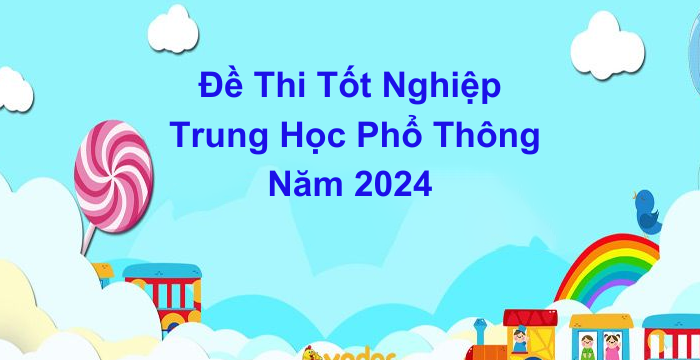
Đề Thi Tốt Nghiệp THPT Năm 2024

Đề Thi Thử Tốt Nghiệp THPT Năm 2024 (28.05.2024) Đề 18

Đề Thi Thử Tốt Nghiệp THPT Năm 2024 (27.05.2024) Đề 17

Đề Thi Thử Tốt Nghiệp THPT Năm 2024 (25.05.2024) Đề 16

Đề Thi Thử Tốt Nghiệp THPT Năm 2024 (24.05.2024) Đề 15

Đề Thi Thử Tốt Nghiệp THPT Năm 2024 (24.05.2024) Đề 14

Đề Thi Thử Tốt Nghiệp THPT Năm 2024 (23.05.2024) Đề 13

Đề Thi Thử Tốt Nghiệp THPT Năm 2024 (23.05.2024) Đề 12

Đề Thi Thử Tốt Nghiệp THPT Năm 2024 (22.05.2024) Đề 11

Đề Thi Thử Tốt Nghiệp THPT Năm 2024 (22.05.2024) Đề 10

Đề Thi Thử Tốt Nghiệp THPT Năm 2024 (20.05.2024) Đề 9

Đề Thi Thử Tốt Nghiệp THPT Năm 2024 (20.05.2024) Đề 8

Đề Thi Thử Tốt Nghiệp THPT Năm 2024 (17.05.2024) Đề 7

Đề Thi Thử Tốt Nghiệp THPT Năm 2024 (16.05.2024) Đề 6

Đề Thi Thử Tốt Nghiệp THPT Năm 2024 (15.05.2024) Đề 5

Đề Thi Thử Tốt Nghiệp THPT Năm 2024 (09.05.2024) Đề 4

Đề Thi Thử Tốt Nghiệp THPT Năm 2024 (08.05.2024) Đề 3

Đề Thi Thử Tốt Nghiệp THPT Năm 2024 (05.05.2024) Đề 2

Đề Thi Thử Tốt Nghiệp THPT Năm 2024 (03.05.2024) Đề 1

Đề Thi Thử Tốt Nghiệp THPT Năm 2024 (09.04.2024)
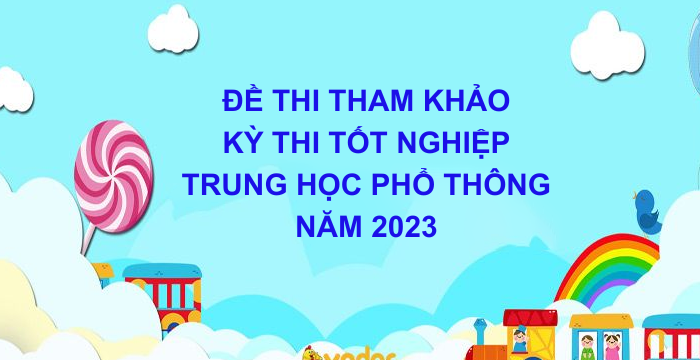
ĐỀ THI THAM KHẢO KỲ THI TỐT NGHIỆP TRUNG HỌC PHỔ THÔNG NĂM 2023 (05.04.2024)

Đề Thi Thử Tốt Nghiệp THPT Năm 2024 (05.04.2024)

Đề Thi Thử Tốt Nghiệp THPT Năm 2024 (1.04.2024)

Đề Thi Thử Tốt Nghiệp THPT Năm 2024 (1.04.2024)
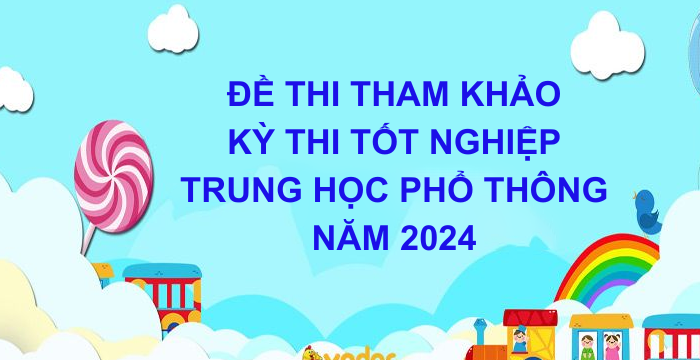
ĐỀ THI THAM KHẢO KỲ THI TỐT NGHIỆP TRUNG HỌC PHỔ THÔNG NĂM 2024 (22.03.2024)

Đề Thi Thử Tốt Nghiệp THPT Năm 2024 (15.03.2024)

Bài Đăng Gần Đây

Đề Kiểm Tra Cuối Kì 1 Tiếng Anh Lớp 9 Global Success (23.12.2025)
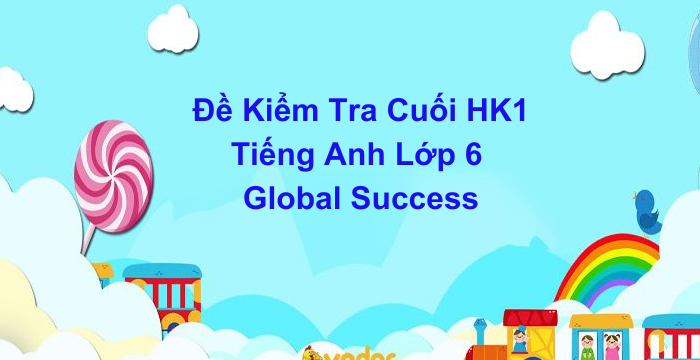
Đề Kiểm Tra Cuối Kì 1 Tiếng Anh Lớp 6 Global Success (23.12.2025)
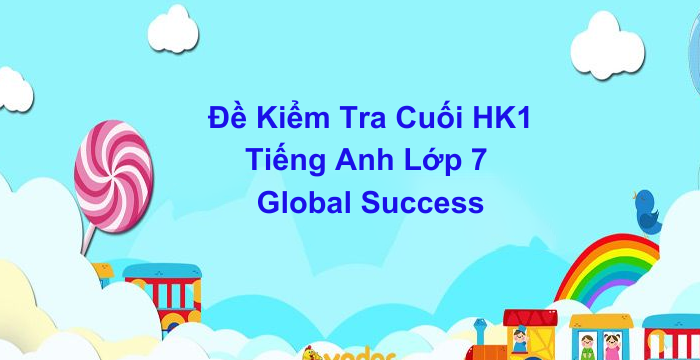
Đề Kiểm Tra Cuối Kì 1 Tiếng Anh Lớp 7 Global Success (22.12.2025)
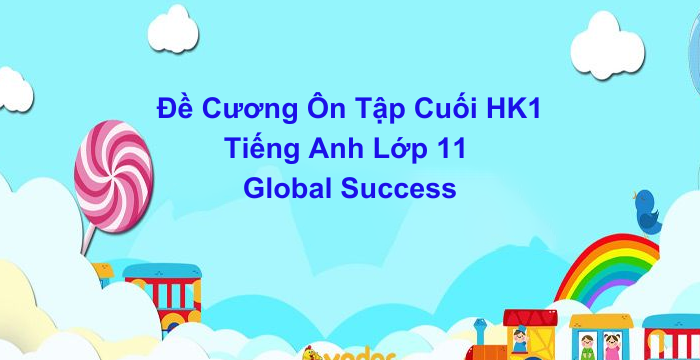
Đề Cương Ôn Tập Cuối Học Kì 1 Tiếng Anh Lớp 11 Global Success (20.12.2025)

